Interferential Current Therapy (IFC)
What is an Interferential Current Therapy (IFC)?
Interferential Current Therapy (IFC) is a popular form of electrotherapy used in physical therapy settings for pain management and rehabilitation. It employs low-frequency electrical currents to target and alleviate various types of pain, including acute and chronic conditions.
Unlike other forms of electrotherapy, IFC utilizes multiple electrical currents that intersect and interfere with each other within the tissues of the body. This interference creates a modulated frequency that can penetrate deeper into the tissue, providing more effective pain relief compared to other forms of electrical stimulation.
IFC is often used to reduce pain, improve circulation, reduce inflammation, and promote healing in musculoskeletal injuries, post-operative rehabilitation, and chronic pain conditions. Additionally, it is non-invasive, safe, and generally well-tolerated by patients, making it a valuable tool in the comprehensive treatment of pain and rehabilitation.
Introduction
In the early 1950s, Dr. NEMEC introduces the concept of interferential current treatment (IFC). While retaining the low-frequency currents’ purported therapeutic benefits, he tried to solve the discomfort they caused. It vanished until research on the pain mechanism conducted by Melzack and Wall in the 1970s revealed that primary afferent neurons may be stimulated to lessen pain.
Amplitude-modulated low-frequency current is produced within the body for therapeutic reasons through the transcutaneous application of alternating medium-frequency electrical currents. It is the result of applying two separate medium-frequency currents at the same time to bodily tissue, producing a low-frequency current. Due to the interference of two distinct medium-frequency currents, the low-frequency current is known as IFC [ interferential current]
Compared to low-frequency currents, medium-frequency currents are more pleasant due to their reduced skin resistance (impedance).
It is possible to achieve a more bearable level of current penetration through the skin by using a medium frequency.
What are the types of Interferential Current Therapies?
Vector impact
Due to its rotation at an angle of 450 degrees in each direction, the interference field has a larger coverage area. This is helpful in cases of diffuse pathology or when it is impossible to pinpoint the exact location of the lesion.
Variations in frequency
Certain equipment permits a fluctuation in the frequency swing’s speed. A rhythmic mode can hold for 1-6 seconds at one frequency, followed by 1-6 seconds at another frequency, with a variable duration to swing between the two. Alternatively, it can be a continuous swing from 0 to 100 Hz in 5-10s and back in a similar time.
Regular occurrence
The interference may be fixed at a specific frequency for certain treatments. If multiple tissue types need to be treated simultaneously, rhythmic frequency can be helpful. A change in frequency also solves the issue of tissue accommodation, which occurs when a certain tissue’s response progressively becomes less responsive.
Sweep frequency
The idea behind the sweep is that the machine is programmed to automatically adjust the frequency of stimulation, utilizing either user- or pre-programmed sweep ranges. The sweep range must match the intended physiological consequences.
The patient’s level of stimulation varies significantly depending on the sweep pattern. Most devices have multiple sweep patterns available.
- Triangle-shaped sweep pattern.
- Rectangular-shaped sweep pattern
- Trapezoidal-shaped sweep pattern
Within the ‘triangular’ sweep pattern, the device progressively shifts from the bottom to the highest frequency, lasting six seconds. Nevertheless, some machines have options for 1 or 3 seconds. Every frequency in the range between the top and base frequencies is sent in the same ratio.
In a distinct stimulation pattern called a rectangular sweep, the base and top frequencies are selected, but instead of progressively switching between them, the machine “switches” between these two precise frequencies.
While the other will alternate between frequencies, the first will provide stimulation across the whole frequency range between the predetermined frequency levels. Together, these two form the basis of the ‘trapezoidal’ sweep.
How does Interferential current Therapy work?
IFC devices provide constant stimulation deep into the afflicted tissue, in contrast to TENS machines, which use intermittent pulses to stimulate surface nerves and inhibit the pain signal. In addition to preventing discomfort, the stimulation also lowers swelling and inflammation, which can result in pain.
IFC uses a 4000Hz carrier wave to overcome the skin resistance to achieve deep penetration.
By introducing two signals into the tissue at marginally different frequencies, 4 pole interferential operates. The two impulses “interfere” when they cross over to create a therapeutic current with a lower frequency. This interference current is created in principle according to the diagram’s pattern. Since tissues don’t conduct equally in real life, currents rarely cause interference in the intended target area. To “hunt” for the ideal electrode locations, therapists frequently employ movable electrodes.
There is a small problem with untrained home use. Many patients experience difficulties with only locating and attaching up to four electrodes; they do not need to optimize the position. Vectored fields are used in some high-end machinery. Since they move the interference zone throughout the volume between the electrodes continuously, they provide a partial solution to the problem; nevertheless, this means that treatment is only administered to the affected area for a portion of the treatment period.
In Bipolar mode,
The waveforms that could be produced by early IFC machines were restricted and they relied on analog circuitry. The Flexistim & Flexistim IF generates real sinusoidal bipolar IFC through digital waveform creation. This employs a 4000 Hz carrier wave to provide a low-frequency signal that is amplitude-modulated to the entire region between the electrodes, not just the interference pattern.
We have put a great deal of time and attention into creating our IFC machines to address the issues that patients encounter when utilizing the apparatus.
Effect of Interferential current Therapy works:
The following outcomes, according to physical therapists, are caused by low-frequency interference currents:
- 2Hz: The metencephalins are activated at this frequency, which provides momentary pain alleviation.
- 10Hz: This frequency seems to induce a calm but awake state in patients while also having a positive impact on the immune system.
- 130 Hz: This frequency causes some local anesthesia as well as longer-lasting pain alleviation by stimulating the release of endorphins.
- 1-100 Hz; This frequency sweep will increase the inflammatory rate.
- 45 to 90 Hz: This frequency sweep will enhance blood flow and suppress the sympathetic nervous system, enabling the parasympathetic nervous system to become more active.
Types of Electrodes of Interferential Current Therapy:
- Plate
- Pen
- Vacuum
Plate electrodes:
- Made from conducting rubber
- Comfortable and long-lasting
- Larger plate electrodes = deeper effect
- Small plate electrodes = superficial effect
- Attached with a strap for good contact
Vacuum electrodes:
- Made forms vacuum
- Suction does not apply constantly because it is uncomfortable for the patient and it causes burn
- wet sponges for better adherence
- it mostly used in smooth areas like the back
- it is not applied in the hairy area
Placement of Electrodes:
Electrodes positioning-
- For interferential therapy 2 electrodes
- Each pair is indicated by the coloring wire from the machine.
- it has 2 electrodes 1 black 1 red.
- pair of electrodes;1 black 1 red
- placed diagonally opposite one another.
Technique of treatment of Interferential Current Therapy:
Patient position: comfortable position
Skin = washed and applied gel on the affected lesion.
After that place the electrode on the affected area.
Instruct the patient to feel a tingling sensation.
At that time decrease the intensity.
What are the symptoms or conditions that Interferential current Therapy [IFC] treats?
IFC is unique in that it employs interferential stimulation as opposed to regular stimulation.
The following seem to be the primary clinical uses of IFC:
- Pain relief for ailments such as neuralgia, herpes zoster, and causalgia.
- Cervical spondylosis.
- Knee osteoarthritis.
- Ankylosing Spondylosis
- Rheumatoid Arthritis.
- Frozen Shoulder
- Disc herniation
- Spinal canal Stenosis.
- muscular Stimulation: Maintain range of motion, retrain muscles, and avoid muscular waste
- Stress Urinary Incontinence
- Edema reduction (a condition in which there is an excessive buildup of aqueous fluid in the tissues or cavities)
- Muscle Damage
- Ligament Damage
What physiological implication does Interferential current Therapy [IFC] have?
Although it is frequently utilized, a physiotherapist should be able to apply interferential Currence appropriately for the patient’s condition.
- It lessens pain and inflammation.
- Promotes better blood circulation.
- Destigmatizes blood vessels.
- Clears the impacted region of waste materials.
- Boosts the rate of metabolism.
- Lowers blood pressure.
- Handles persistent ligamentous lesions.
- Treats hematoma and edema.
- Enhances joint motions that are restricted.
- Boosts the activation of muscles.
- Restores muscle mobility that has been lost.
Physiological and therapeutic impact:
- Relief of stress and muscle spasm
- Activation of innervated muscles
- Affect on swelling/edema
Side-Effects of IFC:
Expert IFC Physical Therapy is quite secure. IFC machine use at home carries some danger.
The electrodes, electrode coverings, and other components of the equipment require meticulous maintenance by users.
The dangers of infection must also be known to them. Don’t use your IFC machine on more than one person.
Make use of bigger electrode systems. Small electrodes present a challenge for electrode location. Big electrodes guarantee that affected body parts are adequately covered for stimulation.
Patients who use IFC machines with tightly spaced electrodes frequently experience superficial tissue discomfort.
Higher stimulation frequencies readily pass through the skin during IFC physiotherapy. Higher electrical energy input is needed at lower frequencies. They can’t get to the deeper tissues. The skin and surface tissues become uncomfortable as a result of the currents; the less uncomfortable the currents are, the higher the stimulation frequency.
Limitations of IFC
IFC is a popular method of alleviating pain that doesn’t have the negative effects that come with anti-inflammatory drugs and oral medicines.
It has certain restrictions, just like any other therapeutic modality:
- Contagious disease
- Malignancy
- Pacemakers.
- Sensation loss.
- The Risk of Bleeding
- Sizable open sores.
- Skin and Wound Conditions.
- The uterus is pregnant.
- Arterial illness.
- Febrile condition.
- Deep vein thrombosis.
- During the menstrual cycle.
Can interferential therapy have any possible side effects?
When delivered by qualified specialists, most people believe that interferential therapy is safe. Like any medical procedure, there could be adverse effects and contraindications.
Rarely, allergic responses to electrode pads may occur, causing moderate discomfort during treatment or skin irritation at the electrode sites. It’s crucial to let your therapist know about any concerns or pre-existing conditions you may have to make sure the therapy is right for you.
FAQS
IFC physiotherapy: what is it?
Therapy that Interferential (IFC) One type of electrotherapy used to treat pain is called physiotherapy. It operates on the basic principle of applying low-frequency currents to stimulate muscular contraction and facilitate recovery.
Is IFC treatment a success?
Current stimulation is an excellent treatment for swelling, muscle and circulation issues, stiffness in the interferential joints, and inflammation.
What is the IFC’s typical frequency?
Interference therapy is one of the most widely used electrotherapeutic pain treatment methods (IFC). Two medium-frequency currents (i.e., 1–10 kHz) must interfere with one another to generate a new medium-frequency current with an amplitude modulated at low frequency (i.e., 1 kHz).
Are there any negative effects of IFC?
Unlike in most situations, these side effects are absent from the current treatment. Rarely are skin burns observed as an adverse reaction to interferential therapy (IFC).
Does IFC make muscles stronger?
It is well-recognized that IFC is a useful method for building muscle. The machines’ beat frequency currents cause muscles to contract, which lessens strain, bruising, inflammation, and spasms. Stimulating the tissue also improves circulation, mobility, flexibility, and metabolism.
Does IFC help with sciatica?
Sciatica is treated with Interferential Therapy (IFT), which is quite successful. Two electrodes are positioned at the nerve roots, while the other two are positioned at the leg.
Can you perform IFC at home?
One popular physiotherapy/electrotherapy method for pain management is called IFC. Endorphin production is stimulated to do this. A professional in the field can provide therapy in the convenience of your own home thanks to the compact, lightweight, and user-friendly nature of IFC devices.
References
- Interferential Therapy. (n.d.). Physiopedia. https://www.physio-pedia.com/Interferential_Therapy
- Clinic, M. P. (2023, December 13). Interferential therapy (IFT): Basic Principle, Indication. Mobile Physiotherapy Clinic. https://mobilephysiotherapyclinic.in/interferential-therapy-ift/
- What is Interferential Therapy (IFT)? What conditions are treated by Interferential Therapy (IFT)? Who will benefit from Interferential Therapy (IFT)? (n.d.). Cbphysiotherapy. https://cbphysiotherapy.in/therapies-offered/interferential-therapy-ift
- Slavova, L., & Malik, Z. (2020, September 30). What is IFT and how does it work? TensCare Ltd. https://tenscare.co.uk/blogs/education-section/what-is-ift-and-how-does-it-work

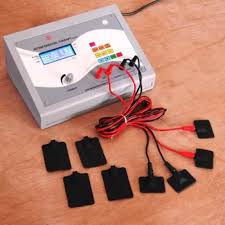
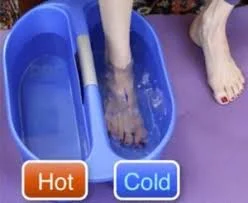
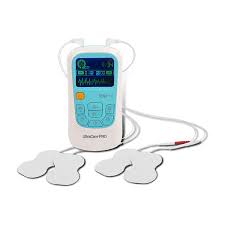
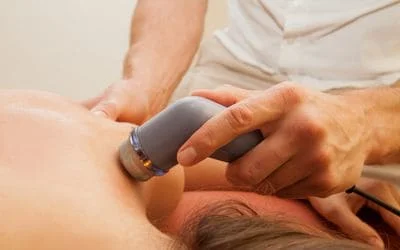
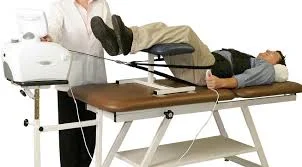
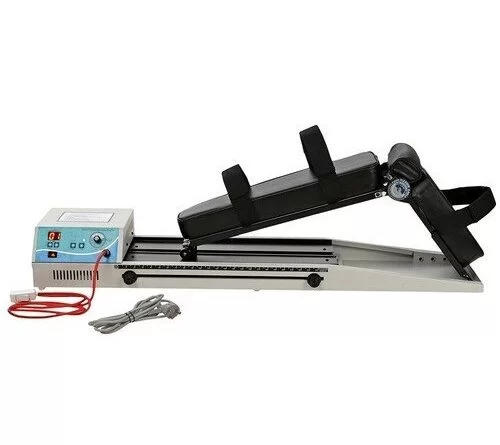
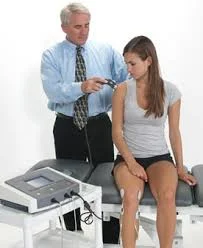
12 Comments